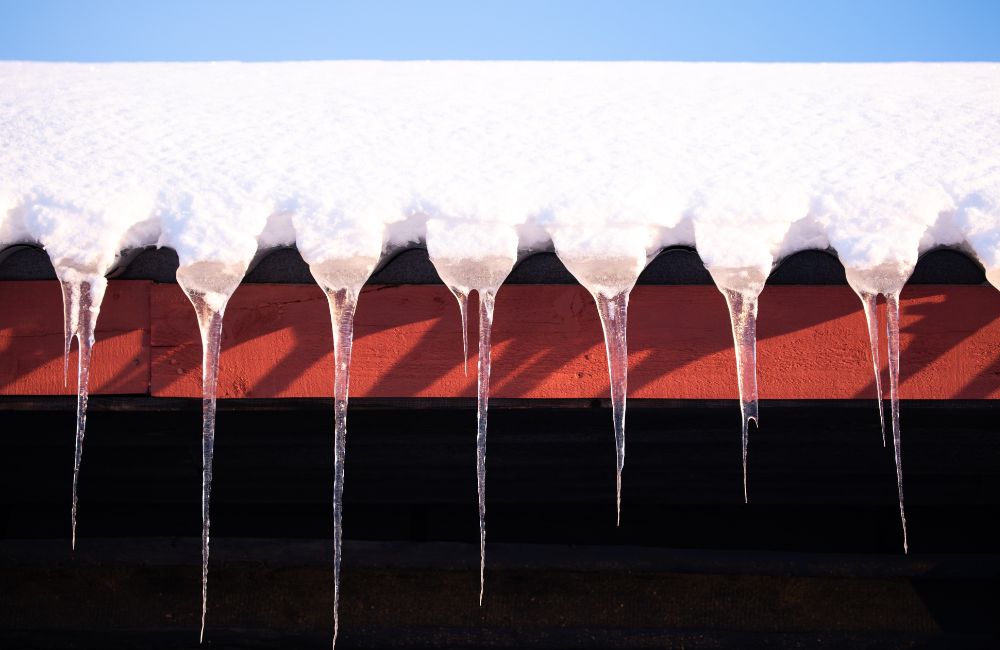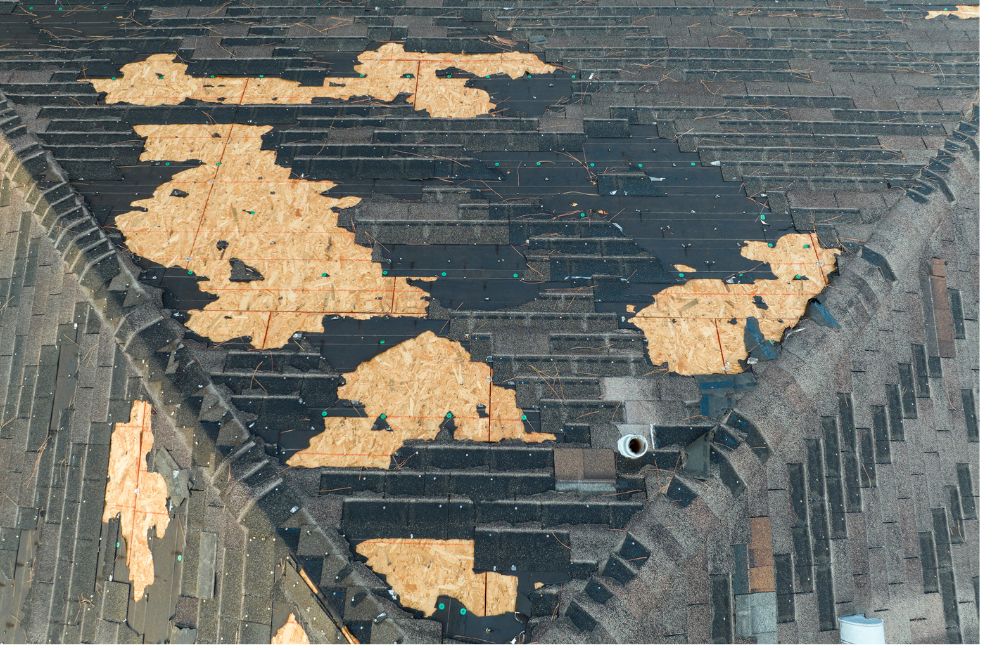Connecticut winters are beautiful, but for homeowners, they bring a hidden roofing challenge — ice dams. As temperatures fluctuate and snow accumulates, these frozen ridges can trap water on your roof, leading to leaks, damaged shingles, and costly interior repairs. For homeowners across Torrington, New Hartford, and the surrounding areas of Litchfield County and Hartford County, understanding how to prevent and handle ice dams is crucial to keeping your home protected throughout the winter.
Fortunately, with a combination of proactive maintenance and professional help, you can reduce the risk of winter roof damage and extend your roof’s lifespan — no matter how harsh the season gets.
Understanding How Ice Dams Form
Ice dams form when warm air from your attic melts the snow on your roof. The melted water flows down until it reaches the colder eaves, where it refreezes. Over time, this process creates a ridge of ice that prevents proper drainage, forcing water to back up under shingles.
Common Causes of Ice Dams:
- Poor Attic Insulation: Warm air escaping from living spaces raises roof temperature, melting snow unevenly.
- Inadequate Ventilation: Without proper airflow, attic heat becomes trapped, accelerating snowmelt.
- Fluctuating Temperatures: Connecticut’s frequent freeze–thaw cycles create the perfect environment for refreezing.
- Clogged Gutters: Debris-filled gutters prevent melted water from draining, contributing to ice buildup.
Warning Signs of Ice Dam Damage
Identifying potential problems early can save homeowners from expensive repairs later. Watch for these warning signs during winter:
- Water stains on ceilings or walls
- Icicles hanging from the roof edges or gutters
- Damp insulation in the attic
- Visible ice buildup along eaves
- Peeling paint or warped wood near ceilings
If you spot any of these signs, it’s essential to act quickly before water intrusion causes mold or structural damage.
Preventing Ice Dams Before They Start
Taking preventive steps before the snow arrives can protect your home through even the most brutal Connecticut winters.
Tips for Prevention:
- Insulate Your Attic: Proper insulation keeps warm air from reaching the roof deck.
- Improve Ventilation: Ridge and soffit vents help regulate attic temperature.
- Seal Air Leaks: Use caulk or foam to close gaps around light fixtures, vents, and chimneys.
- Clean Your Gutters: Remove leaves and debris in late fall to allow proper water flow.
- Use a Roof Rake: After heavy snow, safely remove excess buildup from the roof edge.
For homeowners in areas like Litchfield and Avon, where snow accumulation can be heavy, scheduling a winter inspection ensures your attic and roof system are ready for the season.
When Ice Dams Have Already Formed
If ice dams are already present, avoid using tools or chisels to break the ice — this can damage shingles and flashing. Instead, contact a professional roofing contractor to remove ice buildup and assess potential damage safely.
Temporary measures, such as heated cables or calcium chloride socks, can provide short-term relief, but long-term prevention comes from addressing the root causes: insulation, ventilation, and drainage.
Why Professional Help Matters in Connecticut
Because Connecticut’s winters bring heavy snowfall and wide temperature swings, working with a local roofer experienced in cold-weather damage is essential. A professional can evaluate your roof’s structure, identify ventilation or insulation gaps, and safely apply de-icing systems.
With regular inspections and maintenance, you can minimize costly damage and ensure your roof stays strong through every storm.
FAQs
How can I tell if my roof has an ice dam?
Look for icicles, water stains, or damp attic insulation during or after a snowstorm. If you notice water dripping inside, call a roofer immediately.
Can I remove ice dams myself?
It’s not recommended. DIY removal often causes shingle damage. Hire a professional for safe, effective removal.
Do heat cables work for preventing ice dams?
Yes, when properly installed, they help maintain channels for melting snow to drain safely.
When should I inspect my roof for winter readiness?
Early to mid-fall is ideal—before the first significant snowfall hits Connecticut.
Will attic insulation really make that much difference?
Absolutely. Proper insulation reduces heat loss, helping to prevent uneven snowmelt that can lead to ice dams.
Contact Elite Roofing CT
With over 15 years of experience, Elite Roofing CT specializes in durable, energy-efficient roofing solutions, including inspections, maintenance, leak prevention and ice dam removal. Serving New Hartford, Litchfield County, and the greater Hartford area, we help homeowners prepare for every season with expert roofing services.
📍 Location: 6 Hidden Hill Rd, New Hartford, CT 06057
📞 Phone: 860-309-0493




